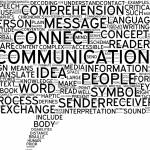We began among those who shook our heads in disbelief upon hearing that people are stocking their grocery carts with toilet paper at the store. We nodded in the affirmative when someone shared a Facebook post compelling the rest of us to apply common sense instead of panic.
However, we are inching closer to the behavior that we initially did not imagine ourselves taking part in. With the help of family, we attempt to coordinate visits to Walgreens to increase our opportunities of purchasing hand sanitizer. We contemplate overly complex procedures of when to slip on and slip off gloves during grocery store visits. We turn to FaceTime and learn about additional video conferencing services for what were previously in-person interactions that didn’t require a second thought. We regularly wipe our phones with alcohol and think again before touching items that might have circulated in crowded environments.
One moment, we don’t think twice about our housekeeper visiting. Then we brief ourselves on the latest news and begin to fear any outsider who might open our front door. We begin to hear the economy’s gears grinding to a halt and start to list, as a pre-emptive strike, what small luxuries we can do without. Then we begin to rationalize the possibility of stopping our son’s weekly tutoring or the lessons our daughter is taking.
The phrase “better safe than sorry” starts to become an anthem. It is a mental tug of war between applying common sense and conventional wisdom and an avalanche of news media content warning us to fear.
And then you search for the endgame. Who is working on a solution? When will the solution arrive? How soon are we from the all-too familiar cinematic scene when the family finally feels brave enough to swing open the doors to sunlight and leave the shelter?
What are we supposed to believe?
We believe we must prevail.




